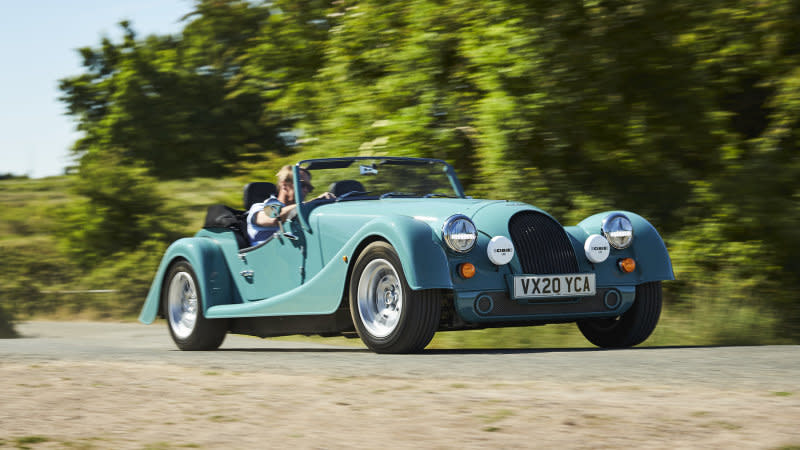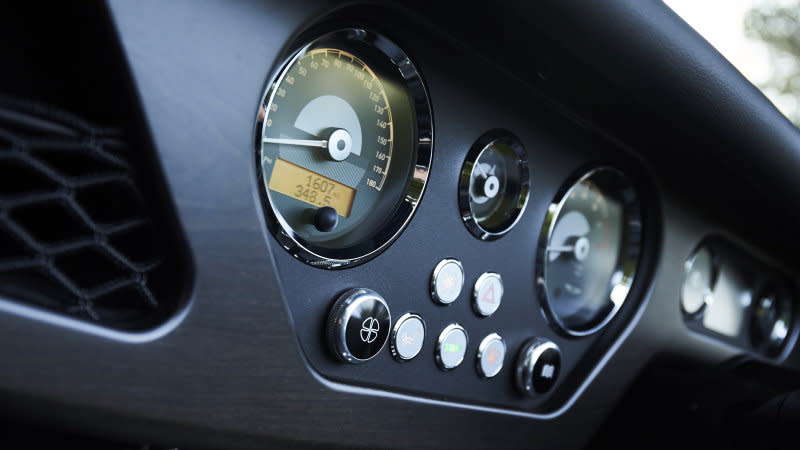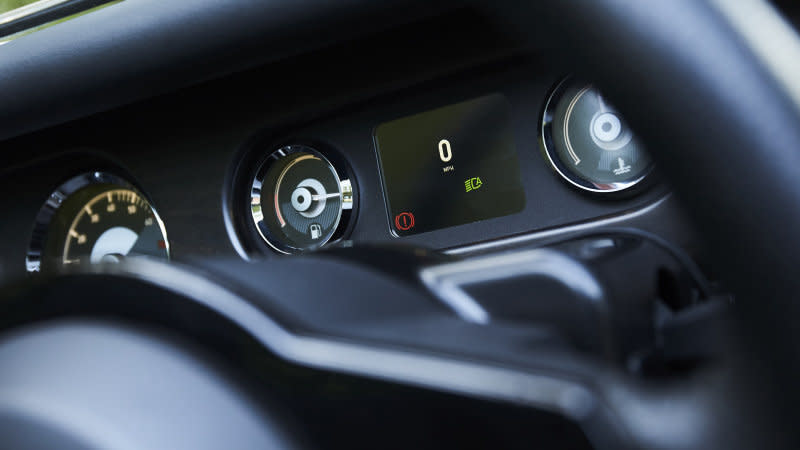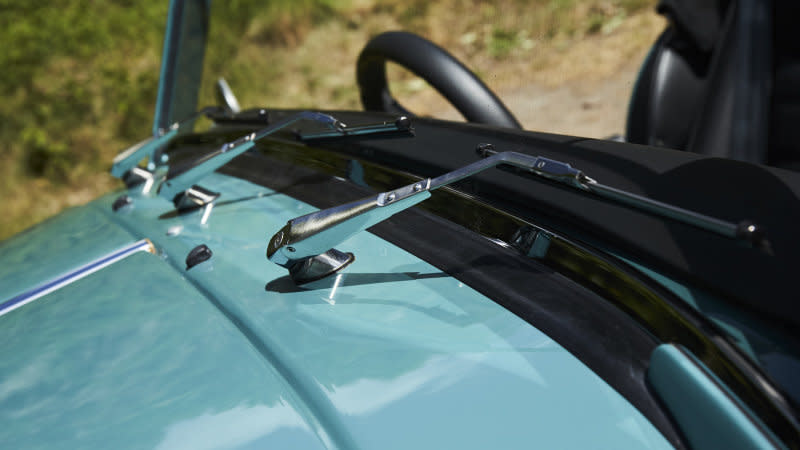Morgan Plus Four First Drive | It's an all-new car! Seriously
MALVERN, England – Replacing a car that’s been around for 70 years takes a bit of thinking. Morgan has done exactly that with its new Plus Four, which replaces the old Plus 4 (note the spelling). I was supposed to see this car at the Geneva Motor Show in March and then drive it at Morgan’s first proper press launch in Barcelona (paid for by the new Italian owners). Covid-19, however, made all that impossible, so I traipsed over to Pickersleigh Road in Malvern to drive this new four-cylinder Moggie.
Fans will already know that this tiny company, founded 110 years ago, has had a clear-out of all its steel chassied models. The last one, the Plus 4, is finished now apart from a few specials to celebrate its 70th anniversary later this year. That car, produced on and off since 1950, became one of the most popular models produced by the little red-brick factory tucked into the East side of the distinctive Malvern Hills in Worcestershire. Morgan reckons that the new Plus Four will number about half the cars it produces, which is currently about 900 annually, but which it (and Investindustrial, the Italian owners) hope will rise to about 1,400 within five years.
We’ve already seen part of this car underneath the new Plus Six, which was launched last year. The chassis (named CX since it was launched in the firm’s 110th year), consists of extruded, riveted and welded aluminum sheet and spars, with an all-independent suspension replacing the independent front and leaf-sprung, solid rear axle of the outgoing Plus 4.

Where the Plus Six has a BMW B58 turbo inline-six, the Plus Four has BMW’s 2.0-liter twin-scroll-turbo B48 inline-four and a choice of six-speed manual or ZF eight-speed automatic transmission driving the rear wheels.
Like its bigger sister, the Plus Four’s handcrafted aluminum coachwork is supported by an ash-wood frame built in the wood shop at Morgan in time-honored manner. The Plus Four is quite compact: 150.7 inches long, 49.2 inches tall and 65 inches wide, which is 3.07 inches narrower than the Plus Six. To my mind it’s better proportioned as result.
Lean and narrow, it looks highly traditional, especially when mounted on the 15-inch steel wire wheels, which required huge amounts of engineering to keep the distinctive offset dish of the old cars.
The BMW mill pumps out 258 horsepower at 5,500 rpm and 258 pound-feet of torque at 1,000 rpm (295 lb-ft for automatic). That’s enough to propel the 2,233-pound manual version from 0-62 mph in 5.1 seconds and the 2,224-pound automatic version in 4.8 seconds. Top speed is 149 mph for both.

Under the FAST act, Morgans are now legally considered replica cars in the United States, a designation that would allow the company to sell as many as 325 per year. Steve Morris, Morgan’s chief executive, says that the six-cylinder Plus Six would be the first new Morgan to be sold for ages in the United States, “but we are absolutely looking at the Plus Four as well,” he says. The cars would come in without drivetrains, which would be fitted by an outside company before they’d be prepared by dealers for sale.
There are no prices yet for U.S. cars, but in the U.K., sticker prices start at £62,995 ($77,756) for the manual car and £64,995 ($80,224) for the automatic, which is certainly expensive, and a lot more than the current £43,389 ($53,555) entry price for the outgoing steel-chassied Plus 4.

If you want to understand just how different this car is compared to its predecessor, simply open the door and climb in. In the old model this involved shredding your nails on the fiendish door catch, a demented limbo dance over the sill, a slide followed by a bone-jarring thump as you slid your derriere into the bucket seat, and then the realization that you couldn’t turn the wheel without holding your elbows out like a Pilates exercise.
By contrast, you just get into the new car, which has enough room to accommodate a 6-footer like me, between a vertically adjustable steering wheel and a parcel shelf behind the seats. There’s room, therefore, for a weekend away without resorting to the traditional brown leather case on the boot rack, which, if it rains, leaves your underwear and shoes sopping.
This is the first production Plus Four; a study in turquoise green, which had been destined for the Geneva Show stand. Not sure I am completely in love with the dark wood dashboard, which looks like a Thirties Radiogram, but the quality of fit and finish puts the old car to shame. Even the instruments, so long a source of embarrassment at Morgan, look the part, deftly combining old and new. The control logic is still a bit odd, with rotary heater controls that spin without reference to output and an ignition key/button start which confounds newcomers to the marque. There’s also the matter of the seats, which are mounted too high for those of a taller disposition.


Staring over the triple windscreen wipers and down the louvred bonnet, I drive out of Morgan’s main gate into the wilds of Worcestershire. The first thing that strikes you is, well, just how modern and taut the Plus Four feels. The old model would take off with a thump and a yowl and then attack the road surface like a metal dragon with a strop on, where this car feels settled and stiff. The BMW mill pulls from absurdly low revs and in spite of the fact that this car has an optional sports exhaust, it sounds quiet; almost too quiet. The six speed shifts lightly and positively with a light clutch action and on a warm morning the air conditioning blasts your upper body with cooling air.
That it has A/C at all is an advancement, included as standard along with other modern touches like power steering, anti-lock brakes and remote central locking.
It’s brisk, too. Pull into traffic and the boost builds immediately and the nose sprints down the road, whereupon you lift off and the turbocharger wastegate exhausts that pressure sounding as if a crazed cymbalist is trapped under the bonnet. In fact, that’s the only bit of character from the engine, which gives no sense of coming up on its cams or boost, just a steady whoosh of power from idling speed.
It feels fast, but very docile, which is partly to do with absurdly tall gearing, with 70 mph in top gear showing the engine turning over at just 1,500 rpm. That’s the Faustian pact you sign to sell this car in world markets where every single gram of CO2 is accounted for. So, while the manual version musters 37 lb-ft of torque less than the automatic, there’s still a surfeit of gears in the ‘box to achieve upwards of 31 mpg.

Unfortunately, the only bit of character from the engine comes from lifting off the throttle and listening to the turbocharger wastegate releasing pressure like a crazed cymbalist trapped under the hood. That’s going to suit some owners just fine, but others are going to miss the character of the old Plus 4. Press the Sport button and the throttle and fueling maps change and the exhaust pops gently on overrun, but the boost is inexorable and unchanged. And in case you are wondering what a Sport button is doing in a quintessential sports car like this, I refer you to my earlier comments about emissions standards.
And then we come to the auto, Morgan’s first official four-cylinder slush box. This ZF ‘box is used by a lot of car makers and it’s a competent cog swapper, though typically suffers a reluctance to change down when overtaking. Not in the Morgan. Even in normal Drive mode, it eagerly pops down a couple of ratios and you've made your pass with no sense of urgency apart from the wind in your hair. Perhaps that’s something to do with having a curb weight that's not much more than a ton, but it feels sublime. Pushing the lever over to manual and then activating the Sport button tightens the changes still further, and the steering-wheel paddles are nice to touch and react immediately. And the auto version feels faster and weirdly, has better and more communicative steering. Wow, have I just recommended an automatic Morgan?
Ride quality isn’t something you talk about with Morgans, ever – but here, too, is a change. Shod with 15-inch wheels and tires, the ride is stiff, but supple. You still get a communication between the road surface and your spine, but it’s more subtle and gentle and your chiropractor can rest easy. The rear end bounces a bit on regular bumps, but the ride is unrecognizable from those of old Morgans. It’s from another automotive planet.
The handling, too, is much improved. The front turns in with more authority with a bit of lean to tell you where you are. You line up the bluff snout for the apex and then floor it coming out, letting the Plus Four grip and slide gently. Despite that stiff ride quality, though, the rear damping allows a fair bit of squat and squish when really on it. And notwithstanding my earlier comments about the automatic, the steering feels over assisted and over geared, but it is accurate.


In the end, it shouldn't be surprising that the Morgan Plus Four is an improvement over what went before. But just what is this old/new car, and is it a proper and authentic Morgan? It certainly looks the part, and the ash-framed coachwork proves the craft and skill that went into its construction. And even with the modernized equipment and dynamics, climbing behind the Plus Four’s wheel still leaves a grin on my face on roads fast and slow, bumpy and smooth, and winding and straight.
There are some causes for concern, not least is the price, but this new car is worthy of its badge in the way that all the four-cylinder Morgans always have been. I think you’d love it and, although I’m looking over my shoulder while saying it, you might like the automatic version the best.
Related Video:





